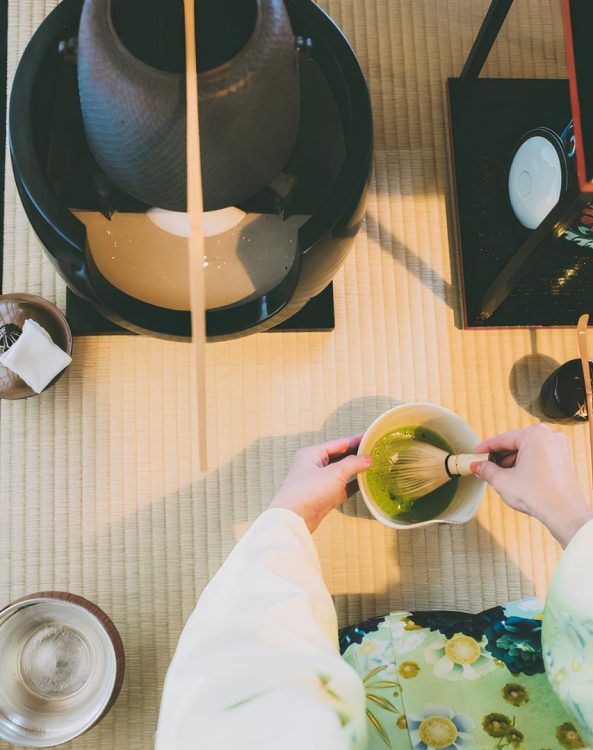News
2024.10.25
Columns
Matcha Bowls: 6 Basic Shapes and Features

Table of contents
1. Introduction
2. Matcha Bowl Shapes
_2-1. Names of Parts
_2-2. Basic Shapes
_2-3. Differences in Mouth Shapes
3. Points to Consider When Choosing a Matcha Bowl for Beginners
4. Conclusion
Introduction
Recently, matcha has become popular not only in Japan but also overseas. The main trend seems to be casual enjoyment of matcha, such as matcha lattes and matcha-flavored sweets, but on the other hand, there is also interest in authentic matcha enjoyment, such as making tea using a matcha bowl and a tea whisk, and specialty stores selling matcha and tea ceremony tools are increasing around the world.
In this column, we will introduce matcha bowls, one of the essential tools for tea ceremony. There are various shapes and types, each with different uses and characteristics such as suitable seasons and scenes. I hope this column will help you learn about the charms and characteristics of each bowl and help you find the perfect matcha bowl for you.
▼Imoto Sangyo Ltd.’s recommended matcha bowls
Matcha bowl set: Four Seasons Flowers (Mino Ware)
Matcha bowl set (Mino Ware)
Matcha Bowl Shapes
Names of Parts
First, let’s look at the names of each part of a matcha bowl.
The diagram on the left below is a view of a matcha bowl from the side. The part where you drink is called “kuchi 口 (rim)”, the side is called “doh 胴 (body)”, the part toward the bottom of the body is called “koshi 腰 (waist)”, and the lower part that supports the bowl is called “kodai 高台 (pedestal)”. The diagram on the right is a view of a matcha bowl seen diagonally from above. The part where the matcha goes is called “mikomi 見込み (opening)” and the part where the tea collects after you’ve finished drinking it is called “cha-damari 茶溜り”.

Basic Shapes
There are a variety of unique designs for matcha bowls. Here, we will introduce six basic shapes.
① Wan-nari 碗形 (Bowl Shape)
This is a common bowl shape that can also be seen in rice bowls and wooden bowls. It is a shape that feels comfortable when held in the hand. Its characteristic is the gentle, soft curve from the rim to the bottom. It is easy to turn the tea whisk and the shape gathers the matcha in the center, making it easy to make tea.
② Ido-nari 井戸形
This is a type of Goryeo tea bowl that was introduced from the Korean Peninsula. It has a high foot and a mortar shape that widens toward the rim. Its charm is that it is not too rounded and is easy to make tea. It has long been known as a high-ranking tea bowl among tea masters.
③ Hira-nari平形 (Flat Shape)
This is characterized by a flat surface when viewed from the side. It has a wide rim and a shallow mikimi, so tea cools easily, and it is used as a tea bowl suitable for summer. It is also called a summer tea bowl. Because the mikomi is shallow, it takes some getting used to in order to make tea well.
④ Tsutsu-nari 筒形 (Cylinder Shape)
The body is a straight cylinder. It is characterized by its deep depth, and is used as a tea bowl suitable for winter because tea does not cool easily. Thicker bowls are considered better because they feel warmer. Also called deep cylindrical shape.
⑤ Han-tsutsu-nari 半筒形 (Semi-cylindrical shape)
A shallow cylindrical bowl, it is about 70% of the height of a tsutsu-nari. It can be used in any season. It is characterized by its low height, stability, and wide rim that is easy to handle. It has a strong presence and is easy to use.
⑥ Rin-nari 輪形 (Ring Shape)
It is characterized by its rounded shape that wraps around the whole bowl. The rim is narrow (Ubaguchi), and it is designed to prevent heat and aroma from escaping.
Differences in Rim Shape
The rim of the bowl can also be divided into three types (inward-facing, outward-facing, and straight).
・Inward-facing: Uba-kuchi
The rim is slightly inward. Since the rim does not hit other tea bowls, it is less likely to break or chip. Because it is inward-facing, the remaining tea easily returns to the bowl after a sip, and matcha does not easily drip outside the bowl. This is the most common design for matcha bowls, and is suitable for drinking matcha in several portions.
・Outward-facing: Hata-sori
The rim is slightly outward-facing, so matcha easily flows into the mouth. On the other hand, it can flow with lots of force, causing it to spill, or the matcha does not return well, causing it to drip outside, so care must be taken. Another disadvantage is that it is prone to cracking and chipping when it hits other tableware, but many people are fascinated by its beautiful shape and like it.
・Straight: Sugu-kuchi
You can enjoy the simple feel of the tea bowl in your mouth. It is recommended for those who want to simply enjoy the taste of matcha and the feel of the matcha bowl without worrying about how to drink it.
Points to Consider when Choosing a Matcha Bowl for Beginners
If you are buying a matcha bowl for the first time, we recommend that you choose one that is easy to make tea in, easy to hold, and stable. The points to check are as follows.

-Width of the Opening
If the opening is wide, it is easy to shake the tea whisk, and you can make delicious tea skillfully. If the opening is narrow, it is difficult to mix, so you will need to get used to it.
-Size and Weight
In the tea ceremony, there are times when you hold the matcha bowl with one hand. If the size or weight is difficult to hold, you may drop the bowl. On the other hand, some bowls are too light and thin, and when you fill them with hot water, they become too hot to hold. Also, if the bowl is too light, it may feel cheap, so it is a good idea to choose one with a weight that feels right and allows you to feel the presence of the bowl when you pick it up.
-Surface Material
We do not recommend rough or too smooth materials. If the material is rough, the tea whisk will often get caught, and if it is too smooth, the tea whisk will slip and the matcha powder and hot water will not mix well.
-Stability of the Base
If you choose a stable one, it will be easier to make tea. It is recommended that you choose one that is not too large and warped, so that customers do not have to worry about knocking over the tea bowl.
Conclusion
I hope you have learned that matcha bowls come in various shapes and have their own characteristics.
There are various schools and etiquette of tea ceremony, and it is a traditional Japanese culture that we want to cherish, but as long as you have a matcha bowl and a tea whisk, you can easily enjoy matcha on your table at home. Why not find your favorite matcha bowl and enjoy the taste and aroma of matcha as well as appreciating the matcha bowl and the time that passes? As we have introduced this time, it is a good idea to use matcha bowls with shapes and patterns that suit each season.
Imoto Sangyo has a wide variety of matcha bowl designs. We also handle ceramic tableware, kitchen utensils, and miscellaneous goods. If you are interested, please see the “Goods & Cases” pages.
If you would like to check the details of the product, please contact us from the “Contact” page.
(Reference)
Japanese Tea Magazine
Relaxore “Shapes and Types of Tea Bowls”
Chiyoku: Points to Note and Glossary for Tea Bowl Appreciation
Category
Archive

